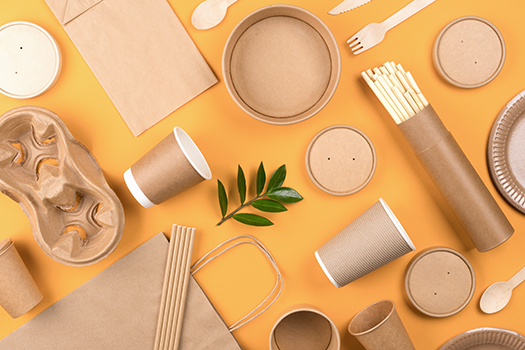Blog Posts
Asking an Expert: Q&A with RGM Leader Patience Mutiso
4 minute read
4 minute read
As the food and beverage and CPG industries evolve, so does the vital role of packaging.
Research shows nearly three-quarters of American consumers’ purchase decisions are influenced by a product’s packaging design. Add in today’s trends around sustainability and AI, and companies must balance priorities and high costs when it comes to packaging’s role in product development.
To explore packaging trends in new product development, Catena Solutions met with Lonnette Alexander, a Product Development Consultant with 20+ years of experience in a variety of industries including food and beverage, CPG, OTC, and dietary supplements.
In this interview, Lonnette taps into her passion for product development and innovation to discuss the role of packaging in meeting consumer needs today and in the future.
There are a few things I always make a point to look at. Given my experience in quality and regulatory, I always put meeting regulatory guidelines at the top of my list.
Next, there’s aesthetics and protecting the overall product. You also must consider messaging, sustainability, and cost. Ultimately, when it comes to packaging, the key is to showcase and protect.
Mistakes include designing packaging that’s not visually differentiated, that’s forgettable, or that overwhelms the consumer. The key is to create packaging that emphasizes the brand and its values while using the print space efficiently and with purpose.
Another mistake is developing packaging that’s difficult, such as packaging that’s cumbersome or hard to open. Companies need to consider who the end consumer is and design packaging accordingly.
An additional oversight is choosing aesthetics over functionality. A company could design beautiful packaging, but it may not function for what it needs, such as protection of the product.
The final mistake is ignoring the consumer. In all these aspects, there will be consumer feedback, so organizations need to take it into consideration and incorporate it into packaging design.

A major cost consideration is how you’re going to print. This includes print quantity, print type, and packaging material you’re going to use. For example, printing digitally can be cheaper than printing on a plate because you’re paying an extra cost associated with plate charge. These factors drive the cost.
Visual aspects, like how many colors you’re using, also drive costs. The key is finding balance to the question: How do you attract consumers and get your message through while maintaining costs that will lead to a ROI?
And finally, minimum order quantity, or MOQ. When you’re creating new products, you want to invest in getting that product out. But how much you buy affects how much it costs, so companies must be analytical and understand who the consumer is to make sure they’re meeting numbers and not over-buying in case the product isn’t successful.
What’s popular right now is sustainability and AI. These are huge in driving trends.
From a sustainability perspective, you’re looking at new materials, including fiber and bioplastics. There are also new technologies and coatings that use resources from the ocean, replacing plastic with materials like seaweed and chitin. However, the challenge is if these materials will truly protect the product.
Then there’s AI. AI can look at materials and efficiently and accurately identify material at materials recovery facilities (MRF) that can be recycled instead of ending up in a landfill.
There’s also a significant movement in the industry to understand how AI can help with product design. Basically, how AI can optimize what humans are already doing; mainly, saving costs, enhancing creativity, and understanding trends better.
I think it’s a combination of both. It largely depends on the ethos of the company. I’ve worked at companies where sustainability was number one—everything we did had to be sustainable, and all packaging had to be sustainable.
In this scenario, the biggest challenge was cost because sustainable packaging is expensive. I’ve also worked at companies where sustainability was number three on the list of importance. And while they took it into consideration, the bottom line is what drives the decision for most of these companies. Cost ends up being a huge consideration, since sustainability is still a relatively new and costly trend.
I think organizations should be stricter and more absolute when it comes to regulatory interpretation. However, the challenge for many companies is how many of the guidelines do they follow? They have a limited amount of space to deliver the message, showcase the product, protect the product, and meet government guidelines.
Some companies take risks and only follow the rules on a “good enough” basis because they’re more focused on using packaging to showcase the product. However, regulatory requirements can be strict, so it’s often a challenge to meet guidelines and showcase the product.
I see a future where we’re reducing the use of plastics because it’s at the point where we’re finding microplastics in our bodies. Thankfully, there seems to be an avenue for development where we’re heading toward eliminating them.
I also anticipate product packaging that disposes itself, such as packaging that decomposes within a certain timeframe. However, most things are driven by cost. Consumers can demand certain types of packaging, but ultimately, cost ends up being the main driver, not consumer demand nor environmental consideration.
Catena Solutions provides customized, tailored solutions for the food and beverage industry, focusing on driving growth, optimizing operations, and navigating industry challenges. Learn more about our solutions here.